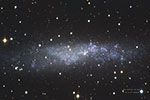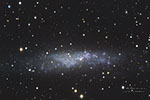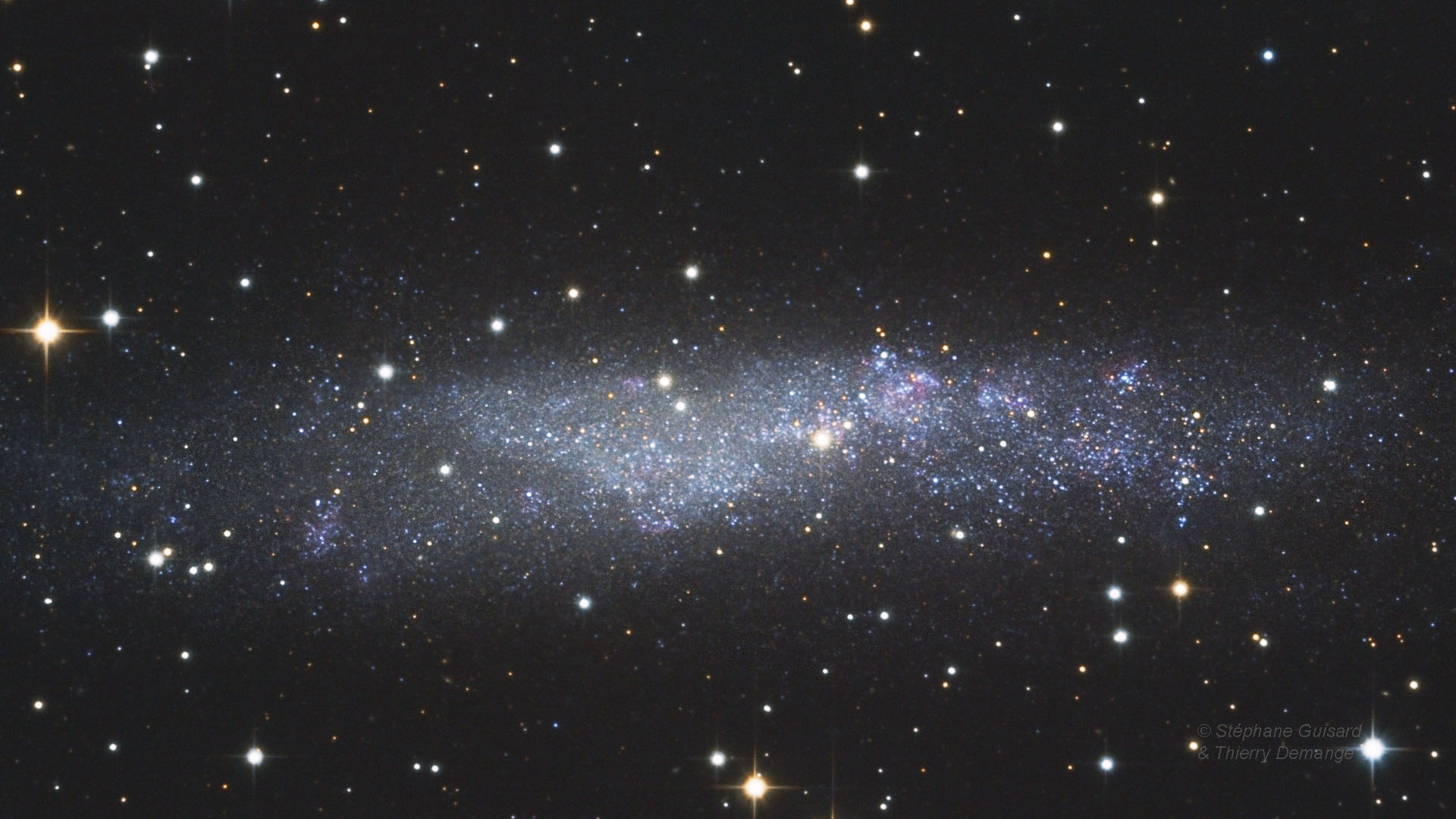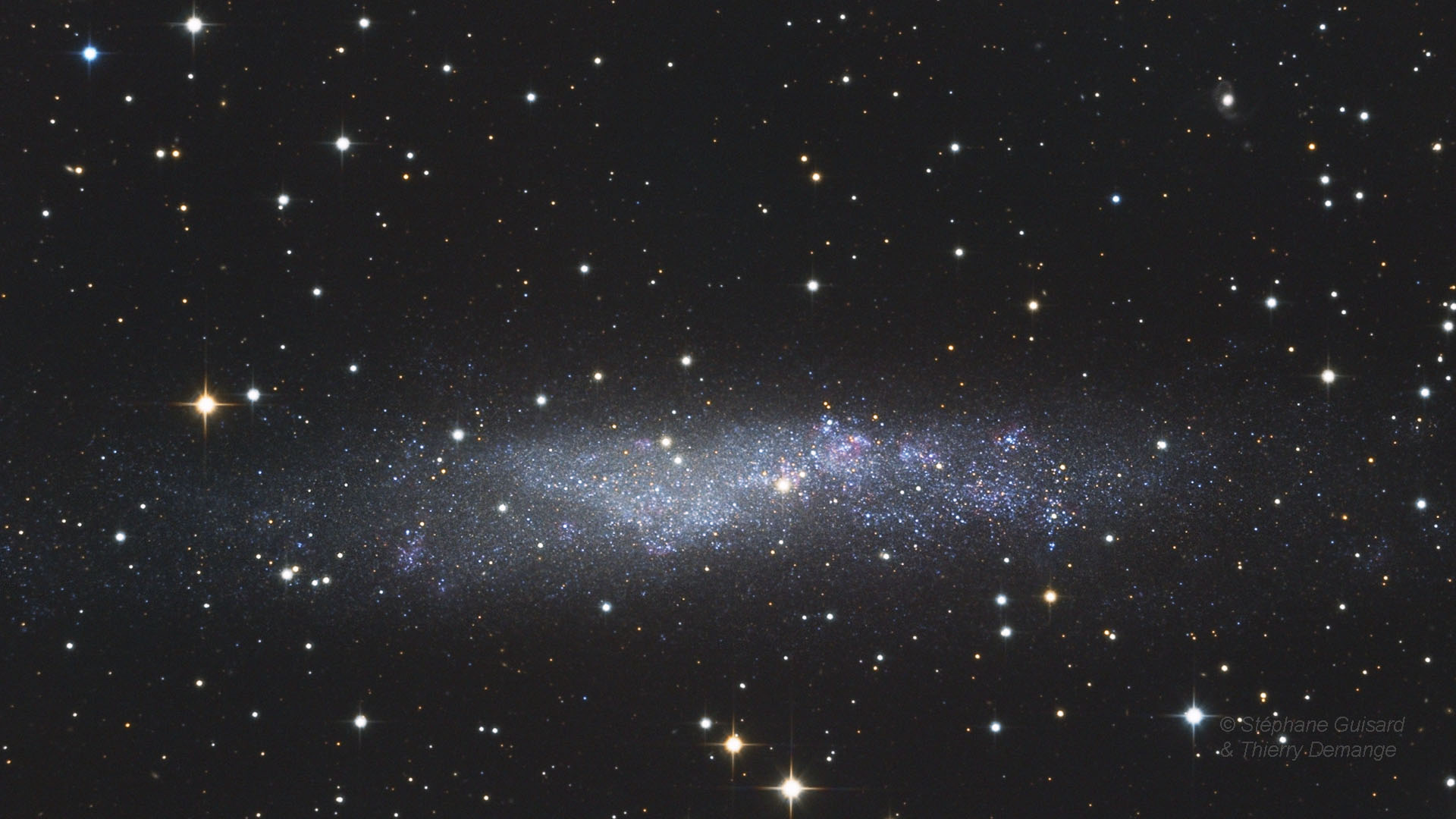HOME
NGC3109, Irregular Galaxy in Hydra constellation,
from the Atacama desert with an amateur telescope.
© Stéphane Guisard,
Los Cielos de América
& Thierry Demange,
CapNature
NGC 3109 is a small Magellanic type spiral or irregular galaxy around 4.2 million light-year away in the direction of the constellation of Hydra. It is the most prominent member of a Local Group subgroup. NGC 3109 is believed to be tidally interacting with the dwarf elliptical galaxy, Antlia Dwarf. It was discovered by John Herschel on March 24, 1835 while he was in what is now South Africa.
NGC 3109 is classified as a Magellanic type irregular galaxy, but it may in fact be a small spiral galaxy. If it is a spiral galaxy, it would be the smallest in the Local Group. NGC 3109 has a mass of about 2.3 billion times the mass of the Sun, of which 20% is in the form of neutral hydrogen. It is oriented edge-on from our point of view, and may contain a disk and a halo. The disk appears to be composed of stars of all ages, whereas the halo contains only very old and metal-poor stars. NGC 3109 does not appear to possess a galactic nucleus.
From measurements of the neutral atomic hydrogen in the galaxy, it has been found that the disk of NGC 3109 is warped but this can somehow also be seen from the structures in the galaxy appearing in my picture below. The warp has the same radial velocity as gas in the Antlia Dwarf galaxy, indicating that the two galaxies had a close encounter approximately one billion years ago.(text from Wikipedia)
The picture shown here was taken from the Atacama desert in Chile with a 50cm diameter F/8 Ritchey-Chretien telescope (Astelco) and a SBIG ST11000 CCD camera mounted on an Astelco NTM500 equatorial mount. Total exposure time is 6h10 minutes through Clear (19x10min)and Red, Green and Blue filters (6x10min each). Image acquisition and pre-processing by Stéphane, color processing by Thierry.


NGC3109, full resolution of image center.

NGC3109, full field image.
